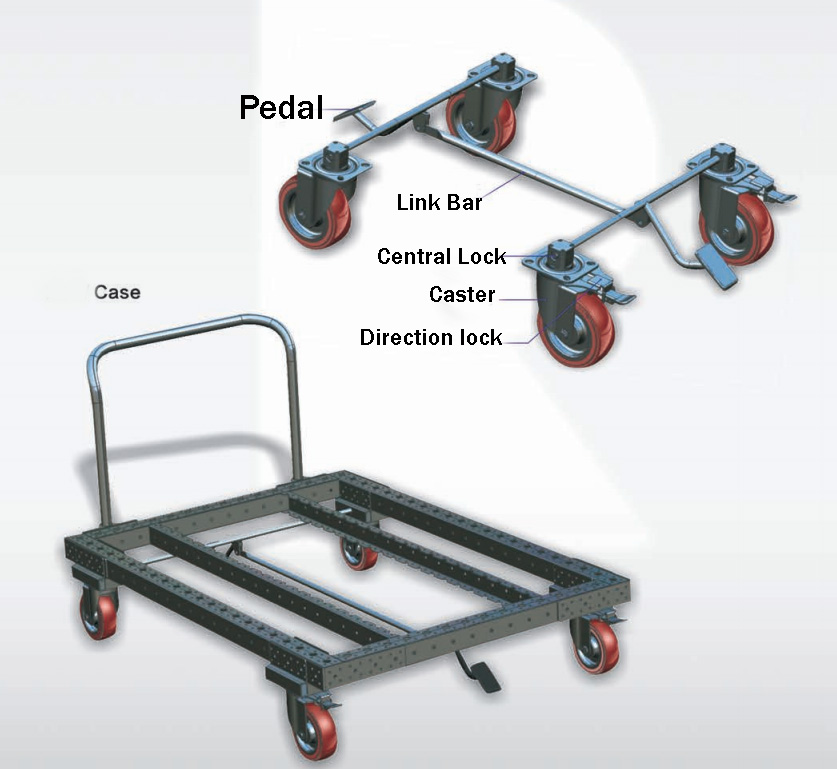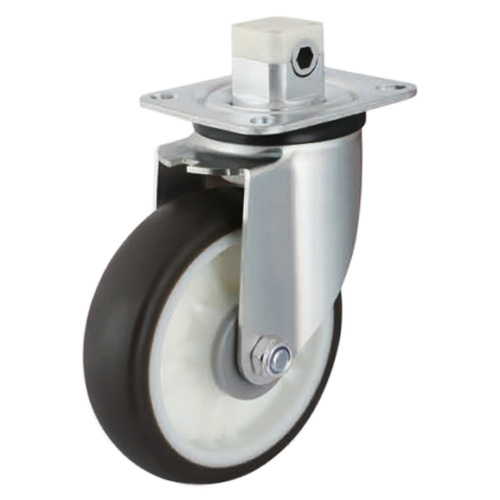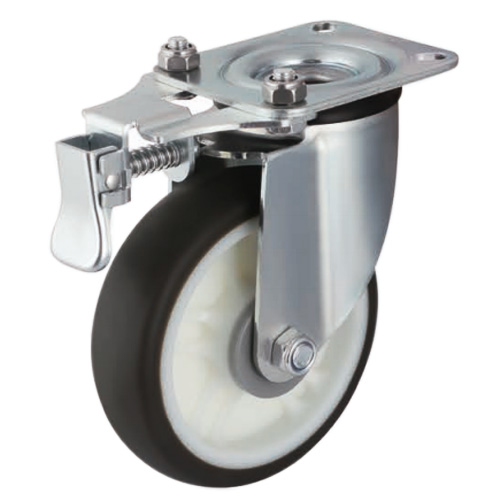Casters with dead man brake
The Advantages of Trolleys with Central Lock Casters (Dead Man’s Brake System)
In industrial, warehouse, and logistics environments, trolleys are indispensable for transporting heavy loads efficiently. Among the various caster systems available, trolleys equipped with central lock casters (often referred to as a "dead man’s brake system") stand out for their enhanced safety, convenience, and reliability. This article explores the key benefits of this innovative mechanism, as illustrated by components such as the pedal, link bar, and central lock.

What is a Central Lock Caster System?
A central lock caster system allows users to simultaneously engage or disengage the brakes on all wheels of a trolley through a single action. The system typically includes:
Pedal: A foot-operated lever that activates the brake mechanism.
Link Bar: Connects the pedal to the casters, ensuring synchronized locking.
Centre Lock: The core braking unit that secures the wheels.
Direction Lock: Optional feature to fix wheel orientation for controlled movement.
The term "dead man’s brake" originates from systems that automatically engage safety mechanisms when no active force is applied—ensuring the trolley cannot roll away unintentionally.
Key Advantages of Central Lock Caster Trolleys
1. Enhanced Safety with Automatic Braking
The dead man’s brake system eliminates the risk of runaway trolleys. When the operator press the pedal, the link bar instantly triggers the central lock, immobilizing all wheels. This is particularly crucial in busy environments where sudden stops or unattended equipment could lead to accidents.
2. One-Step Efficiency
Traditional trolleys require manually locking each wheel—a time-consuming process. With a central lock system, a single step on the pedal engages all brakes simultaneously, saving time and reducing physical strain. This streamlined operation boosts productivity in high-demand settings.
3. Superior Stability During Loading/Unloading
Locked casters prevent unintended movement, even on inclines. This stability is vital when handling heavy or fragile items, as it minimizes shifts that could cause damage or injury. The rigid case housing the mechanism further ensures durability under heavy loads.
4. Directional Control Flexibility
Many central lock systems integrate a direction lock, allowing users to fix wheels in a straight or swivel position. This feature enhances maneuverability in tight spaces while maintaining the option for straight-line movement when needed.
5. Reduced Maintenance and Longevity
Central lock mechanisms are built to withstand repetitive use, reducing wear on individual components. The robust design of the link bar and centre lock minimizes mechanical failures, ensuring long-term reliability.
Ideal Applications
Warehouses: For safe transport of pallets or bulk goods.
Manufacturing Facilities: To secure trolleys near sensitive machinery.
Healthcare: Stabilizing medical equipment carts in hospitals.
Retail: Preventing stock carts from drifting in storerooms.
Trolleys equipped with central lock casters and a dead man's brake caster system represent a significant advancement in material handling technology. By combining safety, efficiency, and adaptability, these trolleys reduce risks, save time, and enhance operational workflows. Whether in industrial complexes or healthcare settings, their one-touch braking and robust design make them an indispensable tool for modern logistics.
Investing in such systems isn’t just about purchasing equipment—it’s about prioritizing safety, productivity, and long-term cost savings.


| Caster No. | Wheel | Material | Bearing | Plate | Mount | Height | Mount Hole | Hex Hole | Loading |
| TR72-4 | 100 x 42 | TPR | Ball Bearing | 114 x 100 | 84 x 71 | 140 | 11 mm | 10/11mm | 220 kg |
| TR72-5 | 125 x 42 | TPR | Ball Bearing | 114 x 100 | 84 x 71 | 165 | 11 mm | 10/11mm | 250 kg |
| TR72-6 | 150 x 42 | TPR | Ball Bearing | 114 x 100 | 84 x 71 | 190 | 11 mm | 10/11mm | 280 kg |
swivel caster with central brake, swivel caster with dead man's brake

 English
English Spanish
Spanish German
German Russian
Russian Arabic
Arabic Portuguese
Portuguese Italian
Italian French
French Hebrew
Hebrew Turkish
Turkish